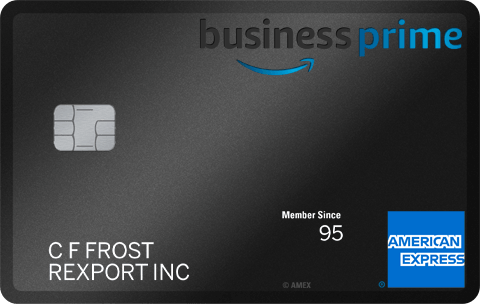- myFICO® Forums
- Types of Credit
- Credit Cards
- Re: How do lenders know if you PIF based on CR?
- Subscribe to RSS Feed
- Mark Topic as New
- Mark Topic as Read
- Float this Topic for Current User
- Bookmark
- Subscribe
- Mute
- Printer Friendly Page
How do lenders know if you PIF based on CR?
Is your credit card giving you the perks you want?
Browse credit cards from a variety of issuers to see if there's a better card for you.
- Mark as New
- Bookmark
- Subscribe
- Mute
- Subscribe to RSS Feed
- Permalink
- Report Inappropriate Content
How do lenders know if you PIF based on CR?
I recently got several new cards that I will be using and PIF, but not before statement cuts. I don't mind balances reporting as they will always be under 10% util per card and aggregate. I don't mind lenders seeing that I can responsible manage 3-4 CCs with decent limits, I'm not looking for new credit so am not worried about AZEO, just would like to show that I PIF.
My question is how do various lenders know that you PIF unless the "Amount Paid" section is used on a CR, ie: how Barclaycard reports. I looked at my full report and even though CapOne has been PIF on a monthly basis since I've had it, it looks on the CR like I've had a monthly balance of 10% or less for over a year. Does it matter as long as the "balance carried" from month to month stays low?
My goal is to show responisble usage/PIF without the hassle of pre statement cut early pays. TIA for any ideas/advice.
- Mark as New
- Bookmark
- Subscribe
- Mute
- Subscribe to RSS Feed
- Permalink
- Report Inappropriate Content
Re: How do lenders know if you PIF based on CR?
- Mark as New
- Bookmark
- Subscribe
- Mute
- Subscribe to RSS Feed
- Permalink
- Report Inappropriate Content
Re: How do lenders know if you PIF based on CR?
I meant lenders other than the one that originated the card. ![]()
Example: Card 1 from Lender 1 shows 20% util every month and is PIF every month after statement cuts. Is there a way for Lender 2 to know that Card 1 gets PIF unless Lender 1 shows "Amount Paid" monthly on the CR? From what I see on my CR, although being PIF, it looks like Lender 2 would see nothing but a constant 20% "balance" reporting on Card 1. Maybe I am missing something, sorry if I'm being confusing.
- Mark as New
- Bookmark
- Subscribe
- Mute
- Subscribe to RSS Feed
- Permalink
- Report Inappropriate Content
Re: How do lenders know if you PIF based on CR?
@Anonymous wrote:Example: Is there a way for Lender 2 to know that Card 1 gets PIF unless Lender 1 shows "Amount Paid" monthly on the CR? (No)
This is why many use the "AZEO" before applying for a new CC or loan. Fico scores jump up a few points and other creditors get to see your ultra low "Util". It just looks better than the normal month to month CR.
- Mark as New
- Bookmark
- Subscribe
- Mute
- Subscribe to RSS Feed
- Permalink
- Report Inappropriate Content
Re: How do lenders know if you PIF based on CR?
If a real person were to look at your CR, then they would see that type of detail. But I don't believe the automated process even looks at that, just the short version.
- Mark as New
- Bookmark
- Subscribe
- Mute
- Subscribe to RSS Feed
- Permalink
- Report Inappropriate Content
Re: How do lenders know if you PIF based on CR?
@Anonymous wrote:If a real person were to look at your CR, then they would see that type of detail. But I don't believe the automated process even looks at that, just the short version.
I forgot to factor in the automated process, was stuck thinking about it from a manual review perspective. Thanks!
- Mark as New
- Bookmark
- Subscribe
- Mute
- Subscribe to RSS Feed
- Permalink
- Report Inappropriate Content
Re: How do lenders know if you PIF based on CR?
- Mark as New
- Bookmark
- Subscribe
- Mute
- Subscribe to RSS Feed
- Permalink
- Report Inappropriate Content
Re: How do lenders know if you PIF based on CR?
Lenders only know if you're paying in full if those banks report adequate information. As mentioned, Barclays is among the banks that do that. You're able to tell exactly what your payments have been in relation to your balances. This information goes back for 24 months on Equifax and Experian and for 30 months on TransUnion. Synchrony is another bank that reports this information.
Capital One and Chase are among the banks that don't do this. However, they do report the "date of last payment." That enables other lenders to know if a card has been used, even if balance of zero has been reported.
American Express doesn't even report the date of last payment. The only way to let lenders know that you're using an AMEX card is to report a non-zero balance.
- Mark as New
- Bookmark
- Subscribe
- Mute
- Subscribe to RSS Feed
- Permalink
- Report Inappropriate Content
Re: How do lenders know if you PIF based on CR?
@Anonymous wrote:I meant lenders other than the one that originated the card.
Example: Card 1 from Lender 1 shows 20% util every month and is PIF every month after statement cuts. Is there a way for Lender 2 to know that Card 1 gets PIF unless Lender 1 shows "Amount Paid" monthly on the CR? From what I see on my CR, although being PIF, it looks like Lender 2 would see nothing but a constant 20% "balance" reporting on Card 1. Maybe I am missing something, sorry if I'm being confusing.
From my experience, it's more than fine to show that you are running monthly balances. They can see that you use your credit and PIF monthly. It is a good thing! 😀
Some lenders report what you've paid and what the balance was before and after payment.
Those consumers are IMO/experience, what lenders want as customers. People that use their CCs twice a year aren't the prime candidates, regardless of what their scores are. High scores don't earn lenders money. It's the folks that aren't afraid to use their credit and able to show the responsible history of managing it.
- Mark as New
- Bookmark
- Subscribe
- Mute
- Subscribe to RSS Feed
- Permalink
- Report Inappropriate Content
Re: How do lenders know if you PIF based on CR?
https://www.creditcards.com/credit-card-news/credit_reports-reveal-card-bill-paying-data-1270.php
I've never seen that kind if data on my reports, but I guess institutions can request it.







